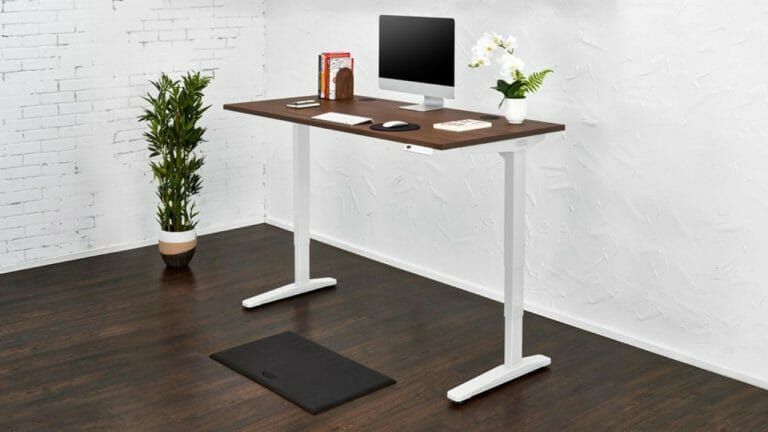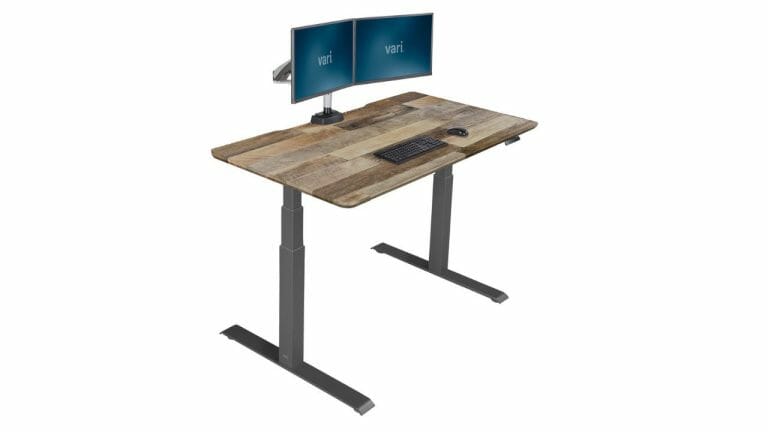Pine Wood vs Other Wood Types For Office Furniture
Wood is one of the most primitive and most popular materials for building furniture. There are lots of different types of wood available in the market. Each has its unique features and characteristics which determine its use and price.
Pine is the cheapest type of plain wood available on the market. It is a lightweight softwood that is used for various kinds of furniture. Pine has certain differences in strength, durability, and aesthetics from other types of wood.
Let’s dive deep into the characteristics of pinewood and its differences from other types of wood, so you can decide whether pine is the right choice for your furniture.
Features Of Pine Wood
There are 126 types of pine trees in the world. All of them don’t look the same. But there are common patterns in them.
Most pinewood is quite light in shade. Pine has a wavy grain that differs in texture according to different variations. But there are common features among the ones that are used for furniture, such as forest pine and sandy pine.
Pinewood is medium in weight compared to other types of wood. It is softwood.
Pinewood has good elasticity and can take a moderate amount of pressure without bending. Pinewood’s annual growth rings are normal in amount, so the wood is moderately hard.
What Is Pinewood Best Used For?
Pinewood is used for many types of furniture, such as tables, beds, cabinets, dining tables, nightstands, chairs, bookcases, and other indoor furniture. Also, pine wood is very good for flooring, should you prefer to floor with wood.
Pine is also good for outdoor furniture. The reason is that pine wood can take a lot of heat and thus holds on better than other wood in open spaces. Popular outdoor furniture that uses pine wood includes benches, rocking chairs, and other patio furniture.
It is more or less an all-purpose wood. The possibilities are endless.
Different Grades Of Pinewood
There are two grades of pine wood available on the market. First grade and second grade. First-grade pine is light white in texture with red wavy lines going through it. The annual rings are very much visible through the cut of the wood.
Second-grade pine is light white all around, with very few lines visible. Annual rings are also not very visible in second-grade pine wood. This look might feel appealing, but the difference in quality is huge.
First-grade pine wood is much more sturdy and hard due to its being much denser. It also means that the first-grade pine wood is heavier than the second-grade pine wood. Second-grade pine wood is much lighter and less dense.
The problem with it is that when the second-grade wood is hit with anything, it dents the wood pretty easily compared to first-grade pine wood.
The price difference is notable. First-grade pine wood is 1.5–1.6 times more expensive than second-grade pine wood. If you want to build something that will last a while, then look for first-grade pine wood.

How Long Does Pine Wood Last?
Any furniture made of pine that has been taken care of nicely will last a minimum of 2 decades. Some even last longer, around 30 years, even when the wood is in contact with the ground.
If the environment is not in favor of the wood, then it would last around 10-15 years. Many preservation methods can significantly increase the durability of the wood significantly.
Wooden furniture needs to be taken care of for higher longevity. If you take care of your furniture, then it will last a lot longer than if you just shove it in and never look after it.
The Advantages Of Pine Wood
1. Lightweight
Pinewood is famous for being lightweight. This has many benefits. First of all, furniture made from pine wood is easier to move from one place to another.
Due to its light weight, it is also popular in building frames.
2. Moderate Elasticity
Pinewood is light in weight, but it is not fragile. Pine wood can withstand quite rough amounts of pressure and maintain its form.
It will bend somewhat after continuous heavy use, but for the most part, it holds up quite well.
3. Cheap In Price
This is perhaps the biggest advantage of using pin wood. Pine trees grow fast and are softwood plants. It means that a large amount of production is possible in less time than with other types of wood such as oak or teak.
The cheap price allows the buyer to buy the wood in large quantities and diversify their creations.
4. Multi-Purpose
Pinewoods are so well-suited to all kinds of furniture that some woodworkers go on to say that this is an all-purpose wood. Although there are places where there are better options than pine. If you want to add some extra structure to your furniture for customization or design, choosing pine would be a winner’s decision.
5. No Additional Fortification Is Required
Many types of wood require extra strengthening for them to function properly or meet the required strength level. Pine is pretty strong from the very start. Thus it does not require extra strengthening.
6. Smooth To Touch
Pinewood has tight grains. This means that the wood is pretty smooth.
If you leave pine wood with its natural appearance, it will look a bit rougher as many parts of the grains will show. However, when you touch it, you will feel the smoothness of the wood. This makes it a good option for desks and other furniture.
7. Absorbs Paint Well
There are a significant number of pores in pine wood. This lets the wood absorb the paint applied to it well.
Due to this, the final product looks fine and smooth. Also, this allows for various types of customizations and designs.
Pine Wood’s Disadvantages
Everything is not sunshine and rainbows in the pine woods. The moment I told you it was the cheapest wood, you knew that there would be a catch to it. Well, here are the disadvantages of using pine wood.
1. Pinewood Is Vulnerable To Scratches And Dents Due To Its Softwood
Pine wood surfaces are not as hard as hardwood trees. That is why it takes less force to damage the surface of the wood.
This can be a problem if you are willing to make a piece of furniture that you want to keep dent-free. However, if you are considerate in the use of your furniture, then this would not pose much of a problem.
2. Shrinking And Expanding
Pinewood shrinks when there is no moisture in the air. In places where the climate is mostly dry, pinewood will shrink from its original size, which can cause a problem for the furniture structure.
Also, if there is too much moisture in the air, pinewood collects the moisture from the air and expands. This expansion is also a problem because it can harm the internal structure of the furniture and the wood.
An example of this is using pine wood for the doors and windows. In summer, they would shrink a little, and that would change the overall size of the door and ruin it temporarily.
The flip side of this is that in the rainy season, when there is a lot of moisture in the air, pinewood expands as it absorbs the water molecules into it.
3. Water Vulnerability
By now, it is quite understandable that water is not the best news for pine wood. If your furniture comes in contact with water for a long and frequent duration, then the wood will lose its strength and durability.
My advice is to keep all your furniture away from wet surfaces.
4. Does Not Stain Well.
If you want your furniture to have a stained look, then pine is not for you. It is because when you stain pine wood, most of the time the stain would be uneven. When this happens, the wood loses the aesthetic appeal of staining.
Alternatives To Pine
Now you know about pine, but you want to know what other options you have, and for that, here are my tips. I will recommend five more types of wood that are close to the quality of pine or even better for reasonable prices.
Soft Maple
Soft Maple is a hardwood. It is quite a clean wood with moderate strength. Firstly, you mustn’t confuse soft maple with hard maple, even though they are both hardwoods. These two types are two different species of wood.
Soft maple is quite light and easy to work with, making it a good choice for furniture such as desks. Soft maple is easy to curve and give shapes in a saw machine. The strength of soft maple is closer to that of walnut wood.
Another great aspect of soft maple is that it takes dye well. Any color can grab onto soft maple and stick there forever. Soft maple is popular for deep and dark color-colored furniture.
Poplar
Poplar is another inexpensive choice of wood to replace pine. Poplar wood is lightweight and cuts well on machines. Poplar is a very good utility wood.
Poplar wood has tight grins that make the wood very smooth to touch. However, there is the color inconsistency of poplar. Poplar can have different shades of the same wood. It can be solved by a good finish that covers the whole wood in a matching texture and color.
Ironically, though poplar has color inconsistency, it takes in stains pretty well. If you want to give your furniture a stained design, poplar is the right type of wood for it.
While handling poplar, one should be careful, as poplar wood gets dented easily.
Beech
European beechwood is stronger compared to soft maple and poplar. This type of wood has a distinct creamy tan texture and is quite dense.
Beechwood holds up well to heavier furniture. Beech is slightly more expensive than soft maple or poplar wood.
The downside of beech wood is that it does not take staining well at all. If you want to keep a clean finish, then go for beech wood. However, staining isn’t a good option.
It has a similar weight and hardness to hard maple. As mentioned, this wood is much denser, which means that it is much heavier too.
Knotty Alder
After functionality, it’s time to focus more on the aesthetics, and knotty alder is the perfect example. It is a type of softwood.
Knotty Alder is very easy to curve and design. The texture of knotty alder is rustic. This rustic charm gives the wood-framed structure an aesthetic vibe. Doors and windows, cabinets made of knotty alder, express the rustic charm well.
White Oak
White oak is the heaviest and hardest alternate for pine in this list. This wood is also the most unique when it comes to appearance.
White oak has a warm color and a very nice finish. This appearance is appealing to many types of furniture. An out-of-the-box example is whisky barrels. In European countries, white oak is a popular choice for making whisky barrels and different types of furniture.
The price of white oak is nowhere near that of pine. Rather, it is in the medium zone of expensiveness. Thus, this may or may not be a popular choice of wood for a large amount of office furniture.
Is Pinewood Stronger Than MDF?
Pinewood is stronger than MDF. It is almost twice as strong. Here are the numerical values for comparison:
A block of pinewood can handle pressure anywhere from 165–198 kg on a single screw joint before breaking off completely. On the other hand, MDF can handle 95-103 kg per screw hold. Common screws that are used for these tests are 4*30 mm turbo gold screws and 5*40 mm silver screws.
Also, pinewood takes nails far better than MDF. If you are using nails and planning for something heavy in structure, then go for pine rather than MDF.
How Much Stronger Is Oak Than Pine?
Oak is far superior to pine when it comes to strength. As I have already shown the comparison between MDF and pine, oak can handle anywhere from 275-300 kg of weight per 5*40mm screw.
This means that oak is almost 1.5 times stronger than pine when it comes to withstanding screw pressure. Both types of quality wood can offer strong support, but oak is stronger than pine.
IF you are not convinced with only the screw pressure ratings, then you can always go for a 1½ turn test. On a 1½ turn test, oak scores around 160–165 kg, whereas pine scores around 45-50 kg. This means that pine tests around three times weaker when it comes to holding onto weight compared to weight.
What Is Stronger, Pine Or Cedar?
Cedar and pine are both popular for their usage. When it comes to strength and durability, cedar is a step ahead of pine.
The reason is that even though cedar is another softwood, its resistance factor is higher than pine. This means that cedar is less vulnerable to scratching and denting than pine. Cedar does not warp or shrink as much as pine, so it is more durable in this factor as well.
Final Words
If you are building office furniture, then pine is a good choice of wood. With its different characteristics, advantages, and disadvantages known, you can choose whether it is the perfect type of wood for your particular use.
You can also choose what fits your cup of desires now that you know what other options are available to you.






